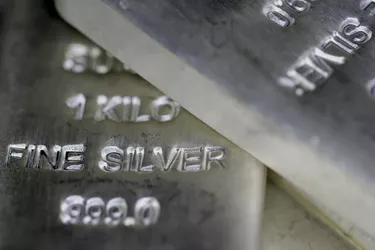
There are numerous ways to invest in silver, but people invest in silver bars to make a pure play on silver spot prices. Silver bars are cast silver with purity levels in excess of 99.5 percent that buyers generally purchase in quantities ranging from 1 to 1,000 ounces. Silver is seen as an attractive alternative to gold, which has exhibited high price volatility over time.
The Market for Silver
Video of the Day
The price of silver has appreciated, but far less than gold, leading investors in silver to believe there is greater potential for upside in silver than in gold. Also, silver continues to be used in an increasingly broad array of industrial uses, primarily stemming from its electricity-conducting properties. There are numerous avenues for liquidating physical silver holdings. The most reliable purchasers of silver bars are precious metal dealers, both on and offline, and pawn brokers.
Video of the Day
Selling Silver
Take the time to compare each potential buyer's offer price. They will vary based on each dealer's own bid-ask spread that stems from the dealer's own inventory and transaction costs. Generally, larger dealers exhibit lower bid-ask spreads. When you consider online buyers, make sure to take into account additional transactions costs stemming from shipping and payment processing costs. Vet potential buyers to make sure they are not fraudulent, and make sure your physical silver's appearance is good, so as not to affect its value.